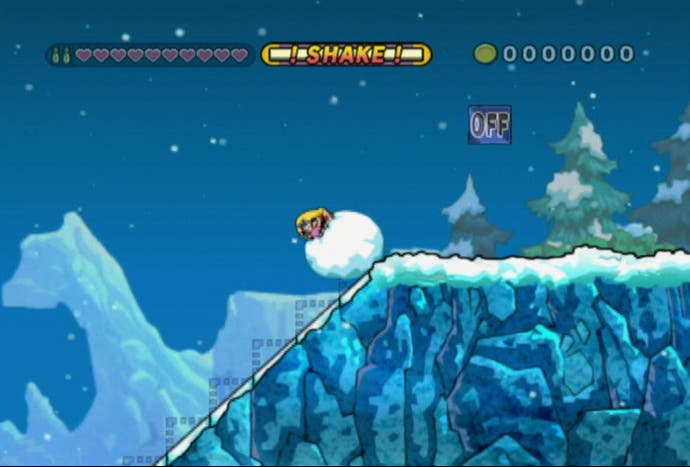Wario Land: The Shake Dimension
Not stirred.
What a relief. It makes a change to play a 2D platformer these days, rather than a 3D action-adventure set in a post-apocalyptic American city. There are no crumbling skyscrapers and fallen telephone poles here, just pyramids and pirate ships. Everything's pink and yellow, not grey and brown, and when you attack enemies they don't explode, they just get dizzy. The plot isn't about government conspiracies or science experiments gone wrong; it's about the kidnapping of some giggly pixies and a magic bag that never runs out of coins. It's a good, old fashioned run-and-jump-em-up, just like your Miyamoto used to make.
Well, not quite. Wario Land: The Shake Dimension is different from classic Nintendo platformers in several respects, one of them being it isn't as good. Another relates to the control system. As you'd expect Wario can run, jump, disappear down pipes, smash blocks, perform belly flops and crawl through gaps, and all that's done using the D-pad plus buttons 1 and 2. However, some moves can only be performed by shaking or tilting the Wii remote.
That includes emptying the bags full of coins littered around every level. It's highly satisfying to watch the treasure spilling out as you shake away, and this is the best use of the remote's motion sensor in the game. It's also fun to give the remote a short, sharp shake to make Wario punch the ground. This causes the whole environment to shudder, dislodging specially marked and precariously placed blocks, and setting off any bombs lying about.

They should probably have left it there, though. Tilting the remote to aim throws is fiddly; waggling it to spin round poles is tiresome, especially when you've got a dozen poles in a row to deal with. The tilt mechanism is also used to control vehicles, including a submarine and a mine cart. This works better as the level of sensitivity has been perfectly tuned. But on the whole the motion-sensing elements don't add much to the experience, and in some instances having to waggle the remote about is a chore.
It's a good thing, then, that the levels are well-designed enough to make you push on through - especially when you throw in the fact each one must be navigated twice. The first time round it's traditional platforming stuff; you must collect coins and kill enemies, and work out which of Wario's moves are required to open up new pathways. It's rare to find yourself stuck for a solution, but sometimes it'll take serious precision control and several repeat attempts before you're able to progress.

This can make the game feel unbalanced at times; having bounded through the first two-thirds of a level effortlessly, it's frustrating to find yourself repeating the same series of pole swings again and again because you keep missing that tricky last leap. But when you finally pull it off, there's a great sense of relief and reward. It's the same story with the boss levels. They're built to a familiar formula, forcing you to work out an attack method through trial and error, then perfect its execution with practice. Just like in the good old days.
So what of the second time round? At the end of each level there's a metal cage containing one of the kidnapped pixies. Shaking it will free the pixie, but also set off an alarm. An on-screen clock starts ticking and Wario has to make his escape before it hits zero - which involves racing all the way back to the start of the level.


